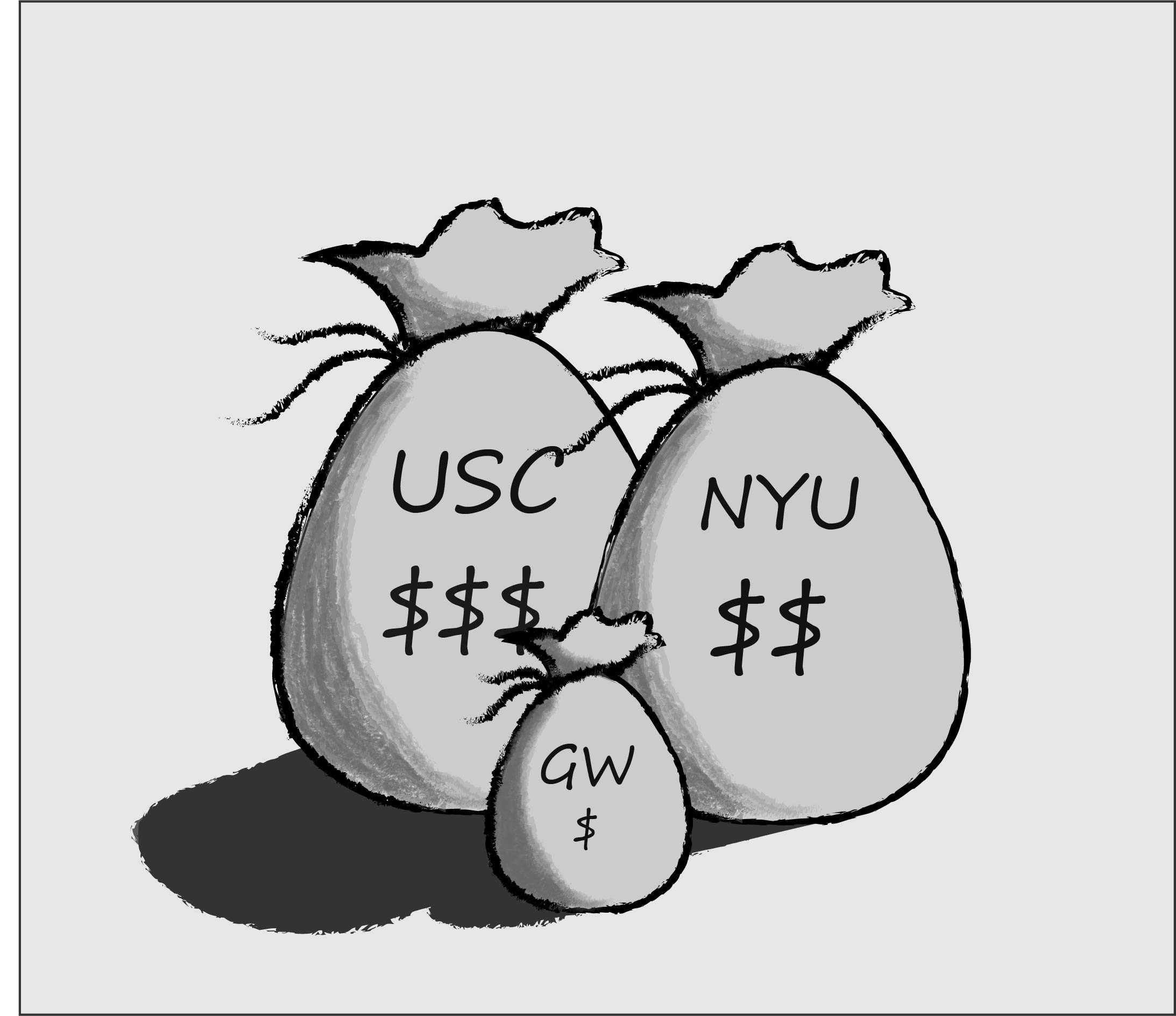As college prices rise nationally, the University’s peer schools are working hard to lower costs for prospective students. But despite GW’s best intentions, it is moving in the wrong direction.
The University of Southern California announced late last month that tuition would be free for students whose families earn less than $80,000 each year. Beginning this academic year, students in the medical school at New York University will receive free tuition. Several other peer schools have instituted policies to keep their schools affordable. Tufts, Georgetown, Boston, Northeastern and Wake Forest universities and the University of Rochester meet the full demonstrated financial need of admitted students. GW does none of those things.
Officials try to make GW more affordable in small ways. They have raised the amount of GWorld dollars and allowed students to take a free 18th credit. But those are trivial wins compared to the progress of our market basket schools. The University does not have a clear plan in place to make the actual cost of attendance smaller for students who want to come here but financially cannot. If anything, the University is becoming more expensive because of a few recent missteps from administrators.

Hannah Thacker | Cartoonist
One of the most pertinent financial issues that has raised concerns from students and faculty is officials’ 20/30 plan. The planned enrollment cut – which will decrease the student population by 20 percent and increase the fraction of STEM students by 30 percent – may result in revenue losses. The University already relies heavily on tuition to fund its operating budget, so an enrollment cutback could require raising tuition even more.
On top of the enrollment cut, GW is nixing fixed tuition starting with the Class of 2024. Floating tuition, which can rise with each year, will make the University more expensive for students. Even if the initial price tag is affordable for a student, they might not want to attend knowing that the cost could increase in the coming years. The University moving away from fixed tuition is indicative of GW’s budget crisis. Take a look at GW’s endowment. The University’s debt is rising and already clocks in at the slowest endowment growth of its peers and tallies the lowest alumni giving rate. Floating tuition might help the University pay off expenses, but it is not going to make the school any more affordable for students.
The University’s planned changes might keep them high on the rankings or grant them more prestige, but they are not going to make the school any more affordable for the students who want to attend. For now, GW will not be like its 12 peer institutions that are making concerted efforts to better the student experience by lowering costs at their schools. Officials should know by now that students want an affordable college experience more than anything else. It comes up in conversations about dining, textbook costs and housing. That is students’ end game – to leave GW without thousands of dollars in debt – and it will ultimately make GW a better place.
There are small tasks the University has accomplished to make the school more affordable. The University has expanded financial aid for five consecutive years, increased GWorld dining dollars and reduced the cost of printing and laundry. The University is also looking to increase the number of international students – who typically pay full tuition – by 2030, which would help officials bring in tuition funds. But these changes are marginal compared to the major pushes other schools have made to ensure people of all economic backgrounds can come to the University.
The University is targeting a certain type of student who does not need to consider tuition costs when they apply or decide whether to enroll. The University is showing a clear preference toward students who can afford to pay, rather than those who are the best students. The current policies of the enrollment cut and floating tuition show that GW is not looking to close the financial gap with other schools.
GW has the choice to make itself more accessible and to do more to close the wealth gap on campus, but instead, it is choosing to take small steps rather than leaps. The University should and must do better to make itself more financially accessible to those who deserve higher education.
The editorial board is composed of Hatchet staff members and operates separately from the newsroom. This week’s piece was written by opinions editor Kiran Hoeffner-Shah and contributing opinions editor Hannah Thacker based on conversations with The Hatchet’s editorial board, which is composed of copy editor Natalie Prieb, managing director Leah Potter, design editor Olivia Columbus, sports editor Emily Maise and culture editor Sidney Lee.
Want to respond to this piece? Submit a letter to the editor.


